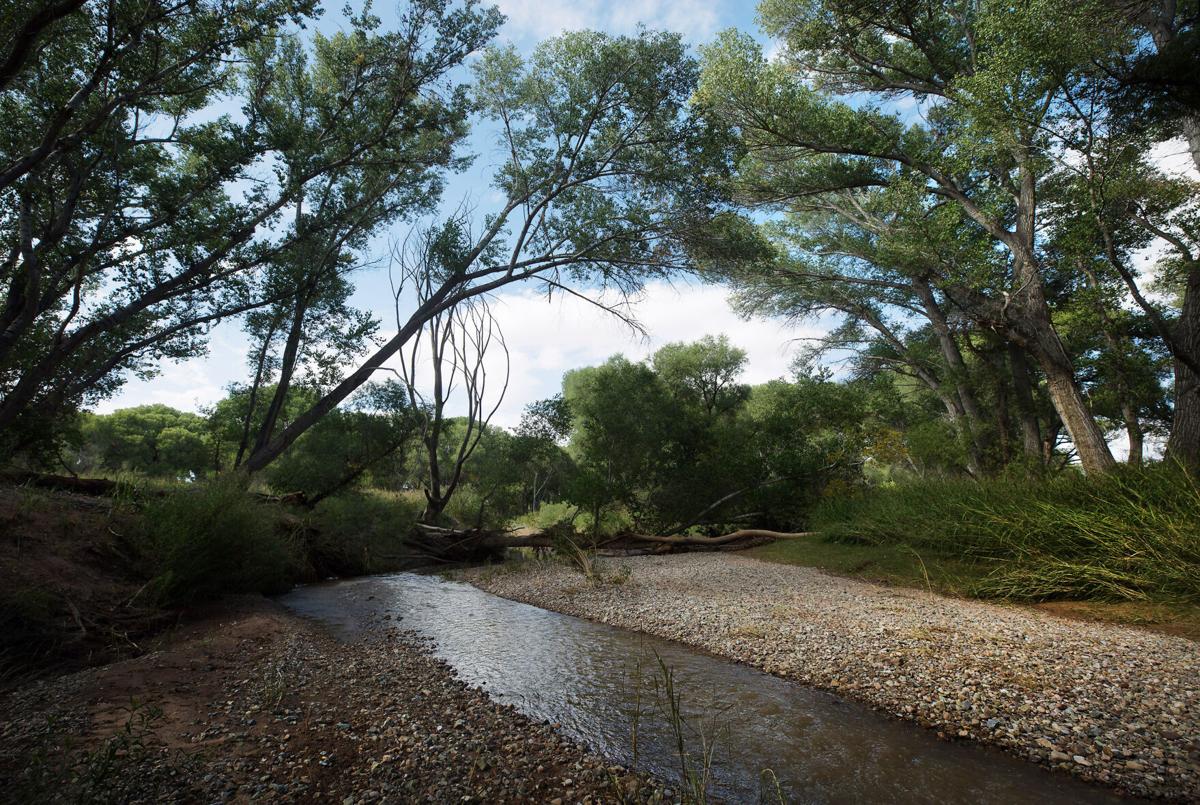Environmental groups asked a federal judge Tuesday to order the federal government and the Army — which they accuse of misstating evidence — to take another look at how Fort Huachuca is affecting the San Pedro River.
The Army base is claiming that its reduction in water use, coupled with recharge efforts and buying former farmland, show there is no detrimental impact on the river, one of the last free-flowing rivers in the desert Southwest and the home of various endangered and threatened species.
Attorney Stuart Gillespie, representing the Center for Biological Diversity, the Sierra Club and the Maricopa Audubon Society, told U.S. District Judge Raner Collins in Tucson that the Army is playing fast and loose with its claims.
And he said the U.S. Fish and Wildlife Service, whose blessing is needed for continued base operations at current levels, has accepted the military’s findings.
At the very least, the environmental groups want the federal agency to go back and recompute whether the operation of Fort Huachuca, both on- and off-base, is harming the river.
Gillespie said Collins cannot allow the base to operate as it is under findings by Fish and Wildlife that are based on “illusory water credits.” He said the fort is essentially claiming it is saving or replenishing more water than it pumps, which the environmentalists dispute.
But John Martin, an attorney with the U.S. Justice Department, told Collins that what the environmental groups claim is science and law is not supported by evidence. He said Fish and Wildlife made the right decision in concluding the Army is doing enough to offset its water use.
The San Pedro Riparian National Conservation Area, created by Congress in 1988, is home to the Western yellow-billed cuckoo, the Southwestern willow flycatcher, the Northern Mexico gartersnake and the Huachuca water umbel, a plant. All of those depend on the flow of the river.
The environmental groups say groundwater pumping is drying up sections of the stream and damaging the vegetation around it. That, in turn, has led to declines in the species by eliminating riparian habitat and food for things like nesting, migrating, good, cover and shelter, they say.
What makes this a federal case is that Fort Huachuca, as a federally funded operation, is legally prohibited from making the situation worse.
Fort Huachuca is claiming water-savings credit for retiring agricultural operations on two ranches, including a 480-parcel near the Mexican border where there used to be alfalfa farming.
But farming stopped there in 2005, with an eye at the time to creating residential lots. And much of the irrigation system had been removed.
“There’s nothing in the record, there’s absolutely no plans and no evidence that anyone was going to irrigate this property immediately, let alone at any point in the future,” Gillespie said.
Yet he said Fish and Wildlife concluded that immediately saved 2,588 acre-feet of water a year, “which turned the fort’s net groundwater deficit into a purported net surplus.”
Martin estimated current fort-attributable water usage at about 4,660 acre-feet a year. An acre-foot is about 326,000 gallons and is considered enough for two to three homes per year.
“It’s self-evident that there is no water savings from a conservation easement if irrigation wouldn’t have occurred anyway,” Gillespie said.
Martin, the federal government’s attorney, told Collins there’s nothing wrong with that. “That’s just not the way conservation easements work,” he said.
“The benefit of acquiring a conservation easement is not its immediate effect,” Martin said. “It’s the permanent benefit of precluding certain uses to maintain certain desired environments or certain conditions on the property.”
Gillespie said the Army can’t take credit for every gallon of water not pumped. He said even if the land had remained a farm, some of that would still have found its way back into the groundwater.
Another issue is that effluent recharge by the fort has not hit the predicted numbers. Martin said the reason is simple: As the base uses less water, there’s less to recharge.
Gillespie faulted Fish and Wildlife for refusing to consider the longer-term effects of pumping on the river, into 2050, citing studies that show an accelerated depletion of the groundwater. Instead, Gillespie said, any analysis stopped at 2030.
Martin said numbers beyond 2030 are not reliable and Fish and Wildlife made the appropriate decision to disregard them.
“That future scenario is driven by incorrect and excessively large estimates of future population growth which drive inflated numbers for water usage,” he said.
Martin also dismissed claims that the federal agency needs to do a new study, this time factoring in the effects of climate change.
Collins took the issue under advisement.
Strong monsoon storms swept through southern Arizona Tuesday evening, bringing heavy rainfall and hail from Bisbee towards Sierra Vista.
The National Weather Service issued severe thunderstorm warnings in southwestern Cochise County the evening of Sept. 7 starting around 5 p.m. and lasting several hours. Residents of Bisbee and Hereford reported quarter-sized hail that caused damage to skylights in their homes.
The time-lapse, filmed Tuesday near East Golf Links Road and South Coronado Drive in Sierra Vista, shows the storm moving west. Video courtesy of Shawn Cottier.





